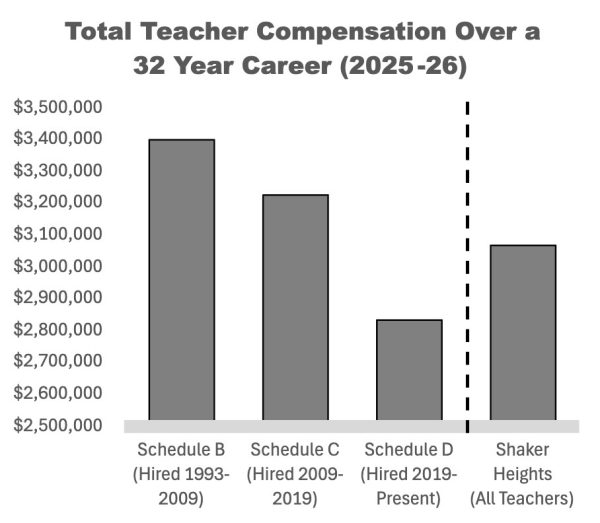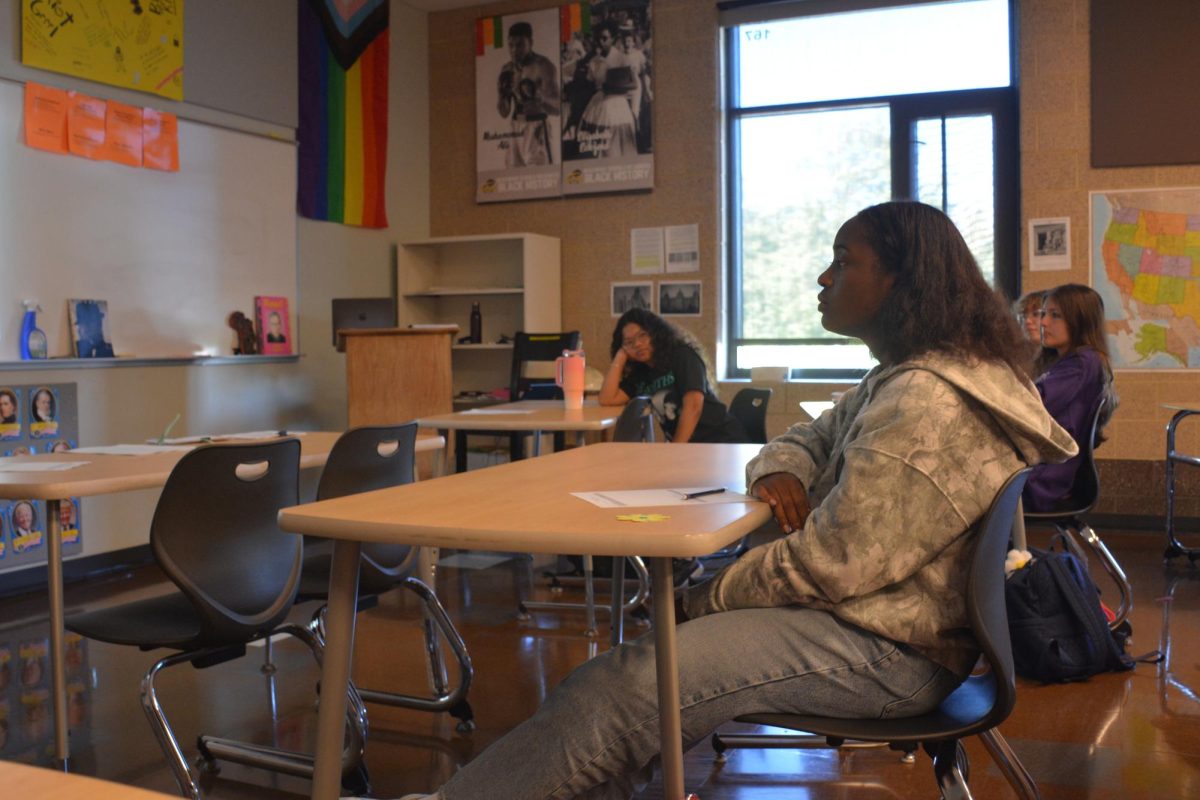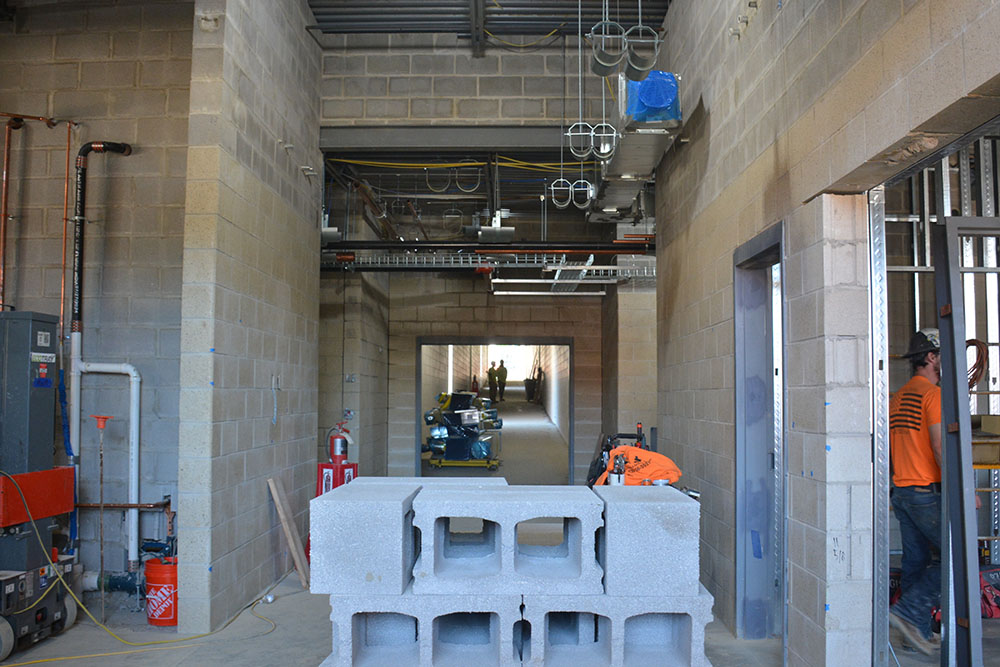The Beachwood Federation of Teachers (BFT) and Beachwood City Schools finalized a tentative agreement for a new teacher contract on July 7, concluding an extended seven months of negotiation with a mutually agreeable contract that was soon ratified unanimously by the School Board and by a wide margin of union membership.
Contract negotiations continued past the end of the 2024-25 school year as the negotiation teams worked hard to make significant changes to the working conditions section of the contract, as well as to reconcile deep divisions over salary schedules.
Beachwood City Schools Superintendent Dr. Bob Hardis praises both sides’ negotiation dynamics while working through differences.
“Even if you have a serious divide on a certain issue, negotiations go better when both sides try really hard to think about what the other side’s needs are,” Hardis said. “I think [both sides] tried hard to be attuned to the positions and the needs of the other side.”
BFT President Pam Crossman is proud of the progress made with this contract, but feels that there is more work to be done.
“Our side feels like we won a lot, we made a lot of strides and we have a lot to be proud of,” Crossman said. “But the work isn’t done, there’s still more to go.”
The negotiation teams spent a long time reconciling a divide in stances on salary schedule compensation for Schedule D, the salary schedule for teachers hired in 2019 or later.
On May 30, in the midst of negotiations, approximately 100 Beachwood Teachers protested along Fairmount Blvd. and Richmond Rd. demanding fairer compensation for Schedule D, holding up signs reading “Invest in the people who invest in our kids” and “Down with Schedule D.”
Crossman wrote in an email that at the time of negotiations around 49 teachers were on Schedule D, but since then it has increased to 55 teachers, almost a third of union membership.
The number of teachers on Schedule D will continue to increase as older teachers retire and new teachers are hired to replace them.
As in most school districts, Beachwood teachers are compensated based on their longevity in the district and their education level.
But teachers on different payment schedules (Schedule A, B, C, D, Preschool and Instructional Tutors) are subject to different starting salaries and different raises over time.
In the 2022-2025 salary schedules, Schedule D had a starting salary of $55,339 in 2024-25 for teachers with Master’s degrees with an additional $1,500 for every year of experience at Beachwood up to 20 years, then periodic increases of $2,000 for every 2-5 years eventually taking 35 years to achieve the maximum salary of $108,339.
For comparison, that same year Schedule C (teachers hired during years 2009-2019) had a starting salary of $67,576 and an additional $2,100 every year for 20 years, then increases of the same amount every 2-3 years up to a maximum salary of $115,733 in a total of 27 years.
The net effect is that a teacher on the 2024-25 contract on Schedule D would be paid $384,808 less than a teacher on Schedule C over a 32 year career.
Crossman explained the BFT’s stance that Schedule D’s compensation was uncompetitive compared to surrounding schools and should be drastically changed or removed entirely.
“We felt like it was an obstacle in terms of hiring teachers, as opposed to a tool that could be used to attract teachers,” Crossman said. “[Raises on Schedule D were] calculated differently than the other salary schedules. So that was a problem too. So we wanted to get rid of it.”
In the previous contract, instead of a percentage raise of a teacher’s current salary, the method used for other salary schedules, Schedule D raises were calculated as a percentage of the lowest salary on Schedule D and added as a flat rate no matter what the teacher’s current salary was.
For example, in the 2024-25 school year, the raise for a teacher hired on Schedule D with the highest salary of $117,121 was calculated as 2.25% of the lowest salary of $48,709.
This was equivalent to a percentage raise of 1.04% of the current teacher’s salary, as opposed to the 2.25% that all other salary schedules received that year.
In the new 2025-2028 salary schedules, Schedule D raises have been changed to be calculated the same as every other schedule.
The new negotiated contract gives all BFT members cost of living raises of 2.5%, 2.75% and 3.00% for the next three years, with additional raises to Salary Schedule D, as well as the Preschool Instructor Salary Schedule and Instructional Tutor Salary Schedule.
The changes to compensation were agreed upon on July 7, the last day of negotiations, when the BFT called for a federal mediator to quickly resolve the divide on Schedule D before the start of the school year.
“The BFT felt that we were still miles apart on salary [so we called for a federal mediator],” Crossman wrote in an email. “It was important to us that the contract be completed before the school year began because the working conditions changes that we reached were so beneficial to the staff and most importantly, the students.”
The number of years it takes for a teacher on Schedule D to reach the maximum salary was also reduced to 27 years from the previous 35 years.

Aside from the cost of living raises that all salary schedules received, the base starting and ending salaries for Schedule D have not changed. Thus, Schedule D received additional “restructuring raises” in addition to cost of living raises in order to compress the number of years it takes to reach the maximum salary.
These restructuring raises only affect teachers with 25 or more years of experience and give a teacher with a Master’s degree an additional $21,990 over the last 7 years of their 32 year career.
Given that Schedule D is only for teachers hired in 2019 or later, it will take almost two decades for these restructuring raises to have an effect on any Beachwood teacher.
After both of these raises, a teacher with a Master’s degree over a 32 year career on Schedule D is now paid $371,888 less than Schedule C, as opposed to $384,808 less in the prior contract.
The Preschool Instructor Salary Schedule now also has salary lanes for BA/MS, and the Instructional Tutor Salary Schedule received raises in addition to the cost of living raises.
Besides the cost of living raises, Salary Schedules A, B and C are unchanged.
Superintendent Hardis explains that Schedule D has a significantly lower compensation than previous schedules in order to keep the district financially stable.
“We don’t want to have years where staff negotiate huge [salary] increases and then have to have [salary] freezes for several years,” he said.
Hardis said that in the new contract, the district conceded that Salary Schedule D would have flat rate increases moving forward, and switched to percentage cost of living increases in line with other salary schedules.
He further noted that the district must proceed with caution and be on watch for any potential financial insecurities as a result of this change to schedule D.
“We compensate our BFT members at a level that is highly competitive with other school districts in our region, because we always want to be able to attract and retain talented staff,” Hardis said. “But we don’t want to be compensating so far above the market that we then create a situation where we spend too much of our funding too quickly, and we have to go back to the voters and ask for higher tax rates to support the operations of the schools.”
Social studies teacher Missy Buddenhagen, who is also a member of the BFT Executive Board, disputes the idea that Beachwood compensates all teachers at competitive levels.
“[The idea that Beachwood teachers are highly paid] really only applies to people who were hired more than 15 years ago,” Buddenhagen said. “It doesn’t apply to anybody who’s been hired in the last decade and a half.
Buddenhagen also notes that the mid-career salary for schedule D is still significantly less than neighboring districts.
She pointed out that even with the newly negotiated terms, in the 2025-26 school year a teacher at Beachwood with a Master’s degree 10 years into their career on Schedule D is paid $75,685, whereas a teacher with equivalent experience and education in the Shaker Heights City School District is paid $86,390.
“The fact that [the district] did not make any great strides to try to fix the inadequacies that are especially prevalent in the middle years of [Schedule D] is a big problem and very shortsighted,” Buddenhagen said.
Salary was only one of many issues addressed in negotiations. The BFT and administrators also reworked how teachers’ work time is allocated, shifting time to teacher collaboration or planning and parent teacher conferences, in turn decreasing student instructional time.
Crossman states that both the administration and BFT agreed on the need to increase collaboration and planning time.
“I was actually really shocked because one of the first things that we agreed on was that we need more days at work without students,” Crossman said. “We need more days to prepare, grade, organize, have meetings and things like that…and they agreed with us.’
Teachers across the district now have a brand new type of non-instructional time called “collaboration time,” where teachers are tasked with working with other teachers to plan, analyze data and develop learning strategies with input from the building principal to improve student learning outcomes, as stipulated in the new contract.
In partnership with the Beachwood Union of Support Staff, teachers in the elementary schools are no longer required to have recess and lunch duty, and now have a 30- minute period of collaboration time every day to replace it. Bus drivers and other support staff now fill in the roles of proctoring kids during lunch and recess.
BMS teachers now have a 42-minute collaboration period four days per week and BHS teachers have a 25-minute collaboration period once every week.
The schedule for parent-teacher conferences has also been changed, with all conferences being scheduled for 11:00 am to 6:30 pm rather than evening programs in order for more parents to be able to attend and for longer periods of time per conference.
BHS and BMS have conferences scheduled Nov. 4. The elementary schools have two conferences scheduled for Nov. 4 and Feb. 17.
Fifth grade teacher Jodi Fish, who was a part of the negotiation team, emphasizes that these changes are for the benefit of both the teachers and the kids.
“[Teachers are] not like ‘we don’t want to do lunch and recess duties’, but we want this because that’s what’s best for kids,” Fish said. “That’s how we can get kids what they need and what they deserve.”
The number of student instruction days have decreased by five days in the high school and middle school, and decreased by six days in the elementary schools, a decrease that Fish says is more than compensated for by the increased effectiveness of teaching from collaboration time.
Even with the reduction, Beachwood is still well within the Ohio mandated 1001 hours of instruction time per school year for grades 7-12.
However, not all teachers will benefit from these schedule changes. Teachers who travel between buildings often have schedules that do not match up with the collaboration times and are unable to attend.
The administration may assign these teachers a collaboration time period if deemed advisable by administration.
A new clause specifies that traveling teachers can be assigned planning periods of less than 15 minutes in addition to their protected 40 minute continuous planning period in order to fulfill the contract required 20/80 split between planning time and instructional time.
Additionally, the new contract maintains the same medical insurance rates as the previous contract in spite of the current inflationary period.
Several protections were maintained for special education teachers completing IEPs for students under the Jon Peterson Special Needs Scholarship, protections that the administration wanted to reduce.
BFT leaders continue to be concerned about the impact of Schedule D on teacher retention in the district.
“[Teacher turnover] has been ticking up in recent years within our district,” Crossman wrote in an email. “Since Spring 2024 the BFT has lost 36 teachers, but only 13 of those have been due to retirement. That’s about 21% of our membership, and if the trend continues, within just a few years, the majority of our membership will have only been in Beachwood for a handful of years.”
Most Beachwood teachers do not live in the district, and Buddenhagen pointed out that teachers with kids in other districts may have more incentive to leave.
“Right now, if you get a few years into your career here, it becomes very attractive to maybe take a job in your home district, where you live, so your kids and you are on the same schedule,” Buddenhagen said.
When the Beachwood Board of Education candidates were asked about the increasing teacher turnover at Beachwood during a candidates forum on Sept. 11, they responded by emphasizing that teacher turnover is a national problem for districts, and suggested administering surveys to identify the causes of the problem.
Wendy Leatherberry, incumbent Board of Education member and candidate for the 2025 election emphasizes that teacher retention is a national issue, not unique to Beachwood.
“There’s a teacher retention problem throughout the country,” Leatherberry said. I think it’s important to recognize that it’s not a unique problem to [Beachwood.]”
According to a new survey by the RAND corporation, national teacher turnover has been trending down since the pandemic(2019) peak of 10% to 7% in the 2023-24 school year, opposite to the trend seen in the Beachwood District.



![“My parents have always said that education is important. My parents are Chinese immigrants, I'm Chinese American, [and that's a] value that has always been ingrained in our community,” said Senior Lyndia Zheng, pictured with Tony Zheng](https://bcomber.org/wp-content/uploads/2025/10/DSC_4244.jpg)










